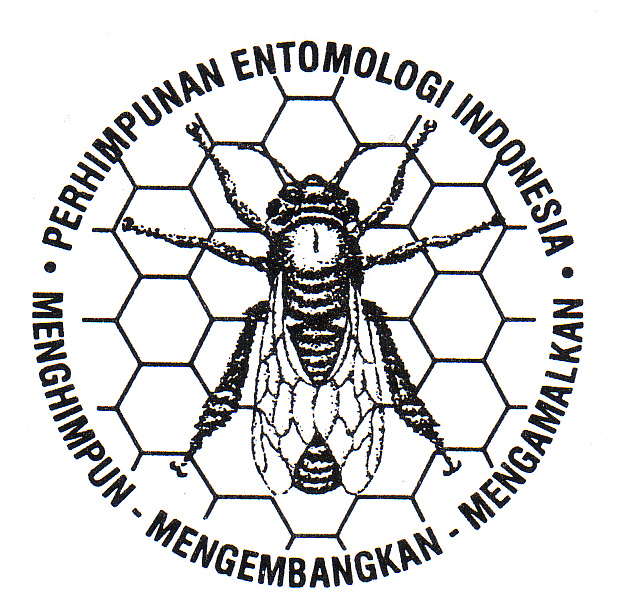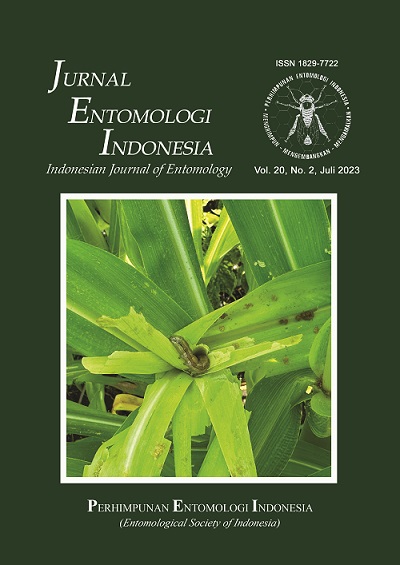Rapid assessments of the rice brown planthopper (Nilaparvata lugens Stal) outbreak in Semarang District, Central Java: Effects of farmers’ low KAP
Belajar dari kajian cepat ledakan wereng coklat (Nilaparvata lugens Stal) di Kabupaten Semarang, Jawa Tengah: Pengaruh dari rendahnya PST petani
DOI:
https://doi.org/10.5994/jei.20.2.137Keywords:
neonicotinoid, planthopper outbreaks, pyrethroid, rapid assessment, resurgenceAbstract
Rapid assessments on the outbreak of rice brown planthoppers (BPH) (Nilaparvata lugens Stal) were conducted to investigate the status of BPH populations and the causative factors behind the outbreak. These assessments served as the basis for developing a proper action program. The assessments took place in Banyubiru Sub-District, Semarang District covering four villages (Kebondowo, Rowoboni, Tegaron, Kebumen) in December 2013. We analyzed BPH data, along with information about farmers’ practices in managing pests collected through interviews conducted in January 2018 in Indramayu. Additionally, we examined data on the number of BPH-infested areas in Java from 2010 to 2020 and the stock of insecticides in Java in 2021. Simple statistical analyses were carried out. The BPH population had spread throughout Banyubiru and was present in all sampled plots. The average number of BPH eggs ranged from 115.25 to 379.65 per rice hill, while the BPH nymphs and imagoes ranged from 3.42 to 11.87 per rice hill. The relatively low nymphs to imagoes ratio might be influenced by the high BPH predator populations, which ranged from three to six individuals per rice hill. Suspected causes of BPH resistance and resurgence included the application of banned and improper insecticides, as well as the repeated use of the same insecticide active ingredients for an extended period. It is recommended to discontinue the mass spraying of insecticides to prevent further plant damage. In 2022, the Pest Control Movement has suggested replacing chemical insecticides with biological or natural pesticides. Intensive extension programs are strongly needed.
Downloads
Published
How to Cite
Issue
Section
License
Copyright (c) 2023 Hermanu Triwidodo, Bonjok Istiaji, Nurul Farida Efriani, Lilik Retnowati, Niky Elfa Amanatillah

This work is licensed under a Creative Commons Attribution 4.0 International License.
Authors who publish with this journal agree to the following terms:
- Authors retain copyright and grant the journal right of first publication with the work simultaneously licensed under a Creative Commons Attribution 4.0 International License that allows others to share the work with an acknowledgement of the work's authorship and initial publication in this journal.
- Authors are able to enter into separate, additional contractual arrangements for the non-exclusive distribution of the journal's published version of the work (e.g., post it to an institutional repository or publish it in a book), with an acknowledgement of its initial publication in this journal.
- Authors are permitted and encouraged to post their work online (e.g., in institutional repositories or on their website) prior to and during the submission process, as it can lead to productive exchanges, as well as earlier and greater citation of published work (See The Effect of Open Access).








